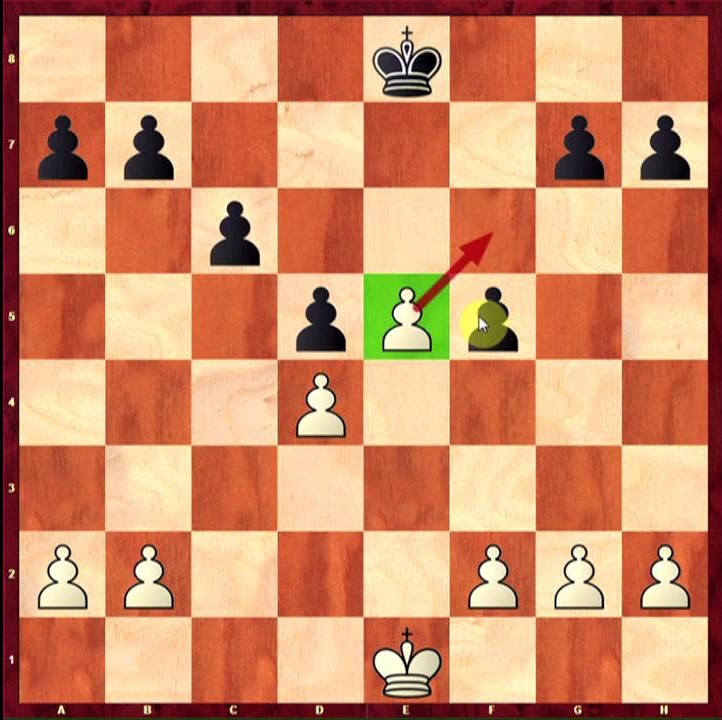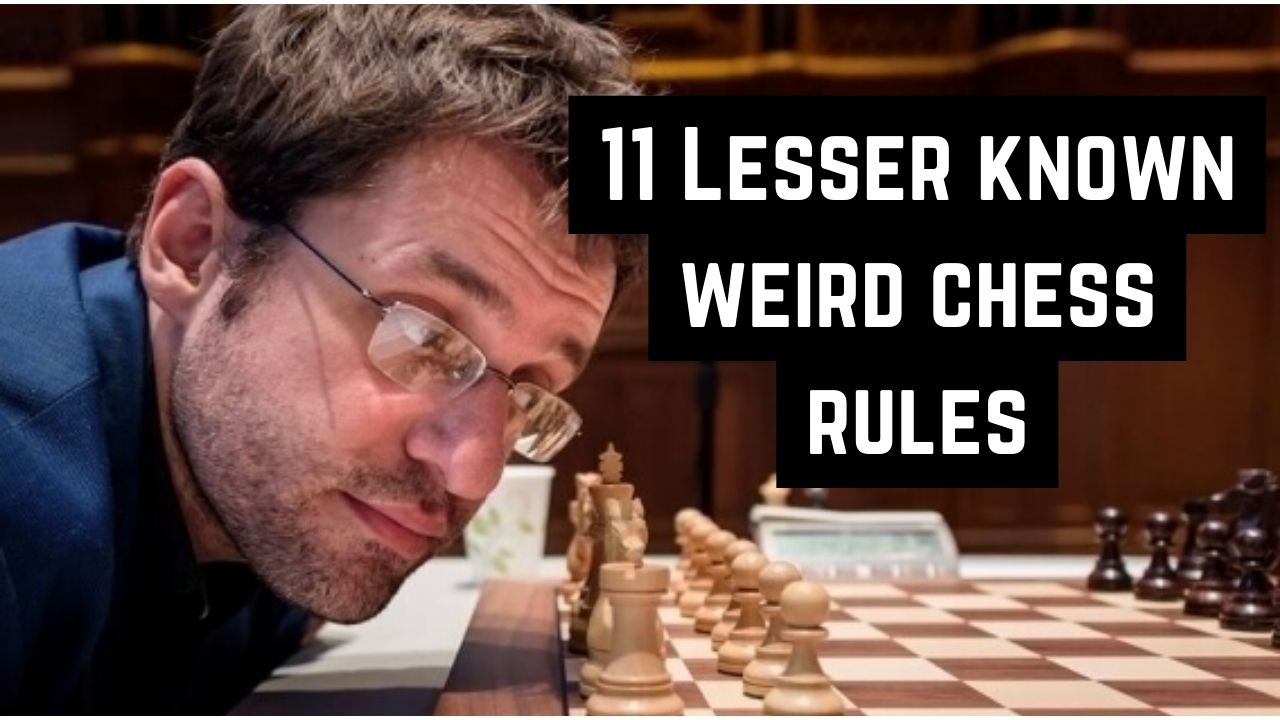Chess is a game of intelligence and bravery. A lot of brain power is required to cover the whole 64 squares and outplay a worthy opponent. But even with so much depth and details, the game works around some really weird rules.
At the top and in most official tournaments, players usually are aware of these rules. And even if someone is unaware, there is an announcement of game rules before a FIDE rated tournament. Or at least a print of it is on a wall in the tournament hall.
But still, the weird rules are so many that anyone can miss one or many of them and get declared a guilty player. And it is always awkward to see how chess players with a lack of game rules knowledge react to them. Thank God we have Internet to prove them wrong.
In this blog, we are covering 11 weird chess rules that many players are not aware of:
1. En Passant
En passant is a legal chess move. It’s a special pawn capture that can only happen immediately after a pawn makes a move of two squares from its starting square, and it could have been captured by an enemy pawn had it moved only one square.
An opponent can capture the just-moved pawn “as it passes” through the first square. The result is the same as if the pawn had advanced only one square and the enemy pawn had captured it normally.

In the picture above black has played a move pawn f7 to f5 moving 2 squares but white pawn was already on e5, meaning en-passant can be played and white e5 pawn can capture the f5 black pawn by moving in the direction shown in the image.
If instead of e5, the white pawn was on e6 then en passant wouldn’t have been possible in case black played f7-f5.
Watch a video of En Passant below for better understanding:
2. The double hand rule in chess
A player is not allowed to play a move with one hand and click the clock with another. This is one of the obscure chess rules FIDE is implementing in their tournaments, to be honest.
If you have played a move with your left hand, hit the clock with your left hand or your opponent can stop the clock and tell the arbitrator about the rule break.
The arbitrator will give you one warning plus maybe add some time to the opponent’s clock but there won’t be a second warning and you can lose the game.
3. Stalemate = Draw
If a player has no legal moves and is not in check, the game is a draw. You can be completely dominating—queen vs lone king—and still blow the win if you accidentally stalemate.
4. Rule for moving the wrong piece while on Check
If the king is on the check and that check is not removed and some other move is played by your opponent. You can claim a win. If you don’t, your opponent can claim a win as soon as you play a move while the opponent king is still in check and it’s your move.
This actually happened with world champion Magnus Carlsen in a game where his opponent Ernesto Inarkiev made an illegal move, and Magnus was unable to spot it, and lost the game by playing a move over his opponent’s illegal move.
Check out the game in a video below:
5. Starting the Game with Wrong Pieces Arrangement
Putting the king and queen in exchanged spots is the most common wrong pieces arrangement on a chessboard. If a game is started already with the wrong arrangement of pieces. FIDE’s rule states that you have to continue the game with that sequence of arrangement.
6. Three Fold Repetition
Chess rules state that if the same position occurs thrice, the game will end in a draw. People usually know this much but the real rule says if there are other moves in between and a previous sequence of moves is repeated once or twice later on, it will still be a three-fold repetition.
See the rule in action in a video below:
7. Pawn Promotion
Players usually don’t know but there is a double hand rule even in pawn promotion. You can’t use both your hands. You have to use the same hand to pick a piece from outside the board i.e. A queen, rook, knight or bishop, place it on a promoted square, pick your pawn with that same hand to take it off the board and also click the clock exactly with that same hand.
Chess really can get weird at times 😀
8. The 50 Moves Rule
The 50 moves rule suggests that if there is nothing coming off the board for at least 50 moves, the game will end in a draw. It usually happens in the end game and if the position is a dead draw, a player can leverage the opponent’s time trouble, play quick and try to win on time while there are 50 moves that can be utilized in flagging.
9. Castling
Castling is a special rule that allows the king to move 2 squares while the Rook moves on the opposite side of that king.
It is very well known that castling can only take place if there is no other piece between King and Rook plus the King hasn’t moved already or isn’t in check or going to be in check position after castling.
But a lesser-known rule is that you can still castle if the Rook is being pointed by any opponent piece, most commonly a Bishop.
See the casting rules in action in the video below:
10. Talking on the Board
Unlike the odd double hand rule, the rule of strictly prohibiting players to talk to each other or one player annoying the other one on the board is strictly prohibited.
You can lose a game if found guilty of violating this rule. Any kind of talk can be considered a distraction by your opponent and you must avoid it at any cost. The only words allowed to say on the board is saying “check” when you have given a check to your opponent or offering a draw. Which your opponent can answer with an accept, reject or no reaction at all.
Some players bring their hand forward after making eye contact that signals a draw offer with a facial gesture, which is a sign language version of offering a draw.
11. Writing your Moves
With all the technology in place, it seems kind of weird that in FIDE rated or any national rated tournament, players are bound to write down their moves. Without filling the annotations sheet and signing it, you can’t claim a win in a chess game.
All this can be easily done with a computer or even at least a human assistance, but this weird rule of chess is not changing, neither is there any talk of changing it, and making it easier for players to just play the game and don’t worry about writing the moves down.
Conclusion:
That’s all in weird chess rules. It can really get awkward if you don’t know any of them, and your opponent wins the game from you because you did something illegal.
So besides working on becoming a better chess player, it is equally important to keep yourself up to date with rules of chess.
Otherwise these weird chess rules won’t forgive you!
Also Read:
- Chess Tactics and Concepts for Beginner & Intermediate Players
- Best Chess Apps
- How to deal with Chess Addiction?
